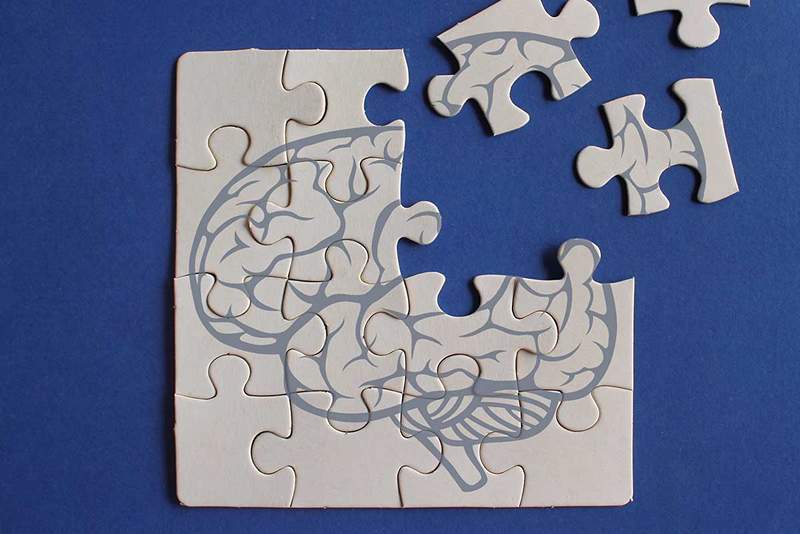Structuralism Fundamentals and main authors

- 2100
- 3
- Glen Vandervort Sr.
Structuralism is a current of thought that originated at the end of the 19th and early 20th century in psychology. It was one of the first systematic theories in the discipline and sought to analyze the human mind in terms of its basic components and the way they organize. In this article, we will explore the foundations of structuralism in psychology, its main exponents and its legacy in the discipline.
Content
Toggle- Origin of structuralism
- Fundamentals of structuralism
- The introspection method
- Criticism and decline of structuralism
- Bibliographic references
Origin of structuralism
Structuralism had its roots in the philosophy and psychology of the nineteenth century, but its development as a scientific and theoretical movement occurred at the end of the 19th and early twentieth century. Structuralism It emerged as an answer to introspective psychology and the philosophy of the mind of the time, that focused on the study of consciousness and subjective experiences.
Wilhelm Wundt, a German psychologist, is considered the founder of structuralism in psychology. Wundt established the first psychology laboratory at the University of Leipzig in 1879, which marked the beginning of psychology as a scientific discipline separate from philosophy. In his work "Principles of Physiological Psychology" (1874), Wundt proposed a Experimental approach to the study of the human mind, arguing that it was possible to analyze consciousness in terms of its basic components.
Wundt was inspired in part in Immanuel Kant's philosophy and the tradition of British empiricism, which argued that all knowledge comes from the experience. In addition, structuralism was also influenced by the work of scientists and philosophers such as Gustav Fathner and Hermann von Helmholtz, who conducted pioneer research in psychophysics and neurophysiology.
Another leading structuralist was Edward Bradford Titchener, a Wundt disciple who introduced structuralism in the United States. Titchener was responsible for disseminating Wundt's ideas in the English -speaking field and developed his own research on the human mind using the introspection method. During his time at the University of Cornell, Titchener trained numerous students who continued and disseminated structuralist ideas in American psychology.
Structuralism, as theoretical and methodological movement, had a significant influence on early psychology. However, as the twentieth century advanced, he began to face criticism and was gradually replaced by other schools of thought, such as functionalism and behaviorism, which approached the limitations and weaknesses of the structuralist approach. Despite its decline, Structuralism left a lasting legacy in psychology and laid the foundations for the scientific study of the mind and its processes.
Fundamentals of structuralism
Structuralism in psychology is based on the idea that The human mind consists of fundamental elements that can be studied and analyzed in a systematic way. These elements, known as sensations, images and feelings, are considered as the "bricks" that make up the mental structure. The main objective of structuralism was to decompose the mind in its most basic components and discover how they combine and organize to give rise to more complex mental experiences.
Structuralists believed that by identifying and analyzing these basic components, they could better understand how they combine and organize to produce more complex mental experiences. For them the elements had these characteristics:
- Sensations: Sensations are the basic elements of perception and represent the direct response of our senses to external stimuli. The structuralists considered that sensations were characterized by their quality (for example, color or taste), intensity (how strong the sensation), duration (how long hard) and extension (how much space occupies in our perceptual field).
- Images: The images are mental representations of previously perceived objects, events or situations. For them the images were essential for thought, memory and imagination. The images share many characteristics with the sensations, although they are less vivid and concrete.
- Feelings: Feelings are the emotional experiences that accompany the sensations and images. They believed that feelings could be classified according to their quality (for example, pleasant or unpleasant), intensity and duration. Feelings were considered to play an important role in motivation and decision making.
Structuralists studied how these basic elements of the mind combine and organize to form more complex mental structures. Proposed that the elements are associated with each other through principles such as contiguity (when two elements occur together in time or space), similarity (when two elements share common characteristics) and the contrast (When two elements differ from each other).
 Teenage pregnancy: psychological factors
Teenage pregnancy: psychological factors The introspection method
The introspection method was a central approach to structuralism to study the human mind and its processes. Introspection, which literally means "looking inward", implied that research subjects examined and describe their own mental experiences in detail and systematic way. Next, the introspection method and its characteristics are deepened.
- Self -observation and self -report: Introspection is based on self -observation and self -repair of the mental experiences of the subjects. Participants were instructed to pay attention to their thoughts, feelings and sensations while performing specific tasks or faced with particular stimuli. Then, they had to describe these experiences in the most precise and objective way possible.
- Training of participants: Structuralists believed that introspection could be a valid and reliable method if the participants were properly trained. Before carrying out introspection, the subjects went through a training period in which they learned to distinguish and describe the characteristics and components of their mental experiences.
- Systematic and detailed description: The introspection method required that participants describe their mental experiences in a systematic and detailed way, focusing on the basic elements of the mind, such as sensations, images and feelings. They were asked to describe the quality, intensity, duration and extension of these elements, as well as the way they combined and organized.
- Control of experimental conditions: To guarantee the validity and reliability of the results, introspection experiments were carried out in controlled and standardized conditions. This included the presentation of specific stimuli and the limitation of possible distractions to facilitate the concentration of the participant in their mental experiences.
Criticism and decline of structuralism
Despite its importance in the history of psychology, structuralism faced significant criticisms that led to its decline as a dominant theory in the discipline. Next, some of the main criticisms and the reasons behind the decline of structuralism are presented:
- Reliability and objectivity of the introspection method: The structuralist approach depended largely on the introspection method, which was subject to criticism for its lack of reliability and objectivity. Self -observation and self -repair of the subjects were difficult to verify and compare, which limited the replicability and generalization of the results. In addition, introspection was susceptible to biases and errors due to the subjective nature of mental experiences.
- Reductionist approach: Structuralism adopted a reductionist approach when trying to break down the mind in its most basic components. This perspective was criticized for its inability to explain complex mental phenomena and the dynamic nature of the mind. Critics argued that the structuralist approach could not properly address aspects such as learning, memory, abstract thinking, motivation and cognitive development.
How Gestalt therapy works and what are its key concepts
Bibliographic references
- Wundt, w. (1904). PRINCIPLES OF PHYSIOLOGICAL PSYCHOLOGY. Come.
- Titchener, e. B. (1902). Psychology scheme: Lessons on the structure of the human mind. Macmillan.
- James, w. (1890). Principles of Psychology. Holt.
- García-López, l. M. (2006). Introduction to Psychology: A historical-conceptual perspective. UNED.
- Fernández-Alvarez, h., & Opazo, R. (2004). History of Psychology: From Antiquity to this day. Pyramid.
- Schacter, d. L., Gilbert, d. T., & Wegner, D. M. (2011). Psychology. Pan -American.
- Good to., MORALEDA, J., & de la Fuente, J. (2000). Basic Psychology Manual. Pyramid editions.

